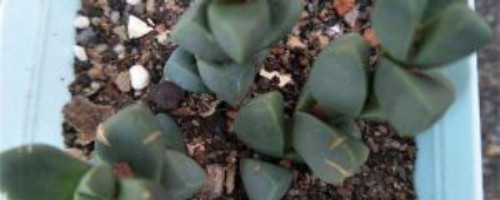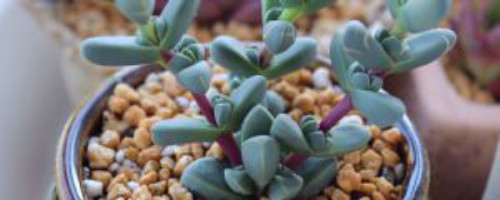Astridia velutina Dinter is a succulent native to southwestern South Africa and prefers warm, dry and sunny conditions. Astridia velutina Dinter has beautiful leaf shape and color and high ornamental value. The old branches are grayish brown, lignified, and the young branches are light green, with internodes in the branches. The leaves are opposite, half-moon shaped, triangular-shaped, pinkish green to gray-green, the tip narrow, apex sharp; The tip of the leaf is pink, the back of the leaf has a keel-like projection, and the lateral bud extends to the axillary of the leaf. Flowers large, terminal, pedicellate, solitary or several interflowers; The petals are white and the stamens are yellow. Capsules are fleshy, seeds are numerous. Flowering occurs in winter.

Astridia velutina Dinter Causes and treatment of yellow leaves

Soil contamination or stagnant water:
Cause: Growing in soil with poor drainage and ventilation, the roots are unable to breathe properly, leading to injury, resulting in yellow leaves.
Treatment: The soil needs to be replaced, replanted in sandy soil with good drainage and ventilation, and the new soil should be disinfected before soil replacement.
Lack of light:
Why: Astridia velutina Dinter needs enough light for proper photosynthesis during its growing period, and lack of light causes the leaves to gradually turn yellow.
Treatment: Move the plants to a place with good light but not direct sunlight for maintenance, and proper shade is needed in summer.
Temperature is too low:
Why: Astridia velutina Dinter is not hardy and will stop growing when exposed to low temperatures for a long time and the leaves will turn yellow.
Treatment: It is necessary to move the plant to a warm environment for maintenance, and the indoor temperature in winter should not be lower than 15 ° C, and it is best to keep it at 20-22 ° C.
Excessive fertilization:
Reason: Applying fertilizer too frequently can cause fertilizer to remain in the soil and damage roots, which can lead to yellow leaves.
Treatment method: If conditions permit, the plants can be removed from the pot, the roots can be cleaned, and then planted in new soil for maintenance; If you do not want to change the soil, you can also use water to wash away the fertilizer in the soil.
Other reasons:
Iron deficiency: Ferrous sulfate can be sprayed to supplement iron and improve the situation of yellow leaves.
Soil plate: Loosen the soil in time to ensure that the roots can breathe properly.
Astridia velutina Dinter is a succulent plant of the Astridia velutina Dinter family.
Astridia velutina Dinter prefers warm, dry, sunny conditions. Not cold, drought resistance, fear of high temperature, summer maintenance is to pay attention to shade, otherwise the surface is easy to wrinkle. The Astridia velutina Dinter requires rich, loose soil.
Astridia velutina Dinter can be potted for viewing in winter, or hung for maintenance, and it is full of vitality to highlight the festive atmosphere. It is easy to feed as long as it is kept in a cool and ventilated place and watered when the soil is dry.
Found with signs of growth slowly normal water supply, Astridia velutina Dinter no obvious dormant period in the summer, cool and ventilated, you can safely spend the summer. Cold season is their peak season, less than 2 degrees to slowly cut off water. Keep the soil dry for the winter.
Astridia velutina Dinter's usual methods of propagation are sowing and cutting. Sowing is generally carried out in April to May, indoor pot sowing, germination about 10 days after sowing, the roots of the seedlings are finer, and the water should be carefully added. The seedlings can be transplanted after 1 month.
Cuttings are mainly carried out in spring and autumn, select full stem sections, cut into 8~10 cm, inserted in the sand bed, 15~20 days to take root, when the root grows to 2~3 cm, you can go on the pot seed.